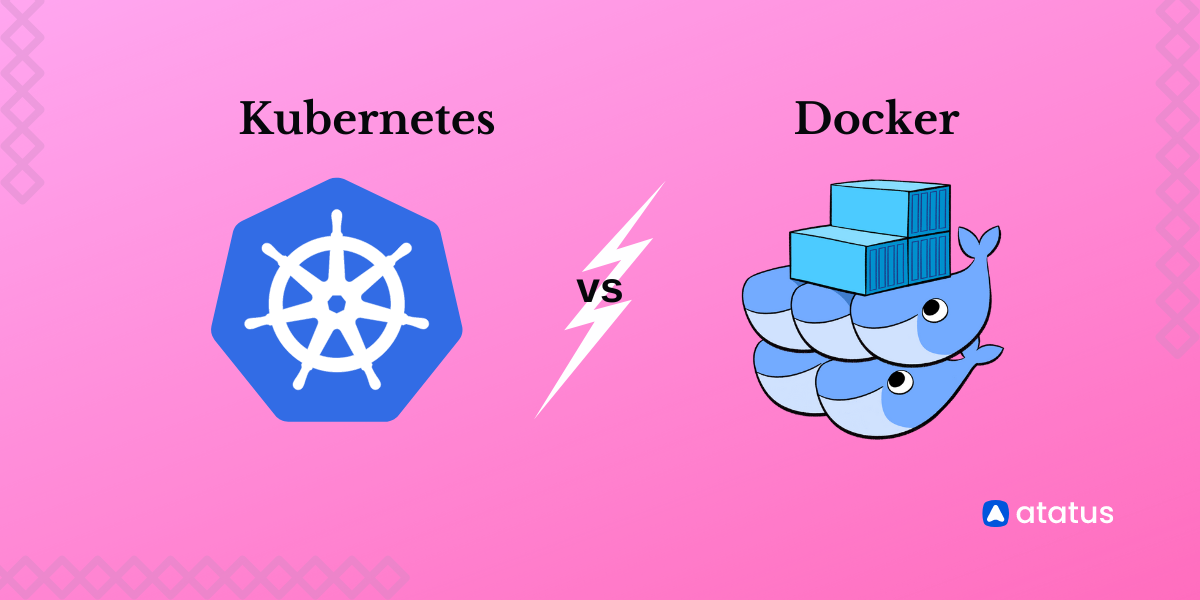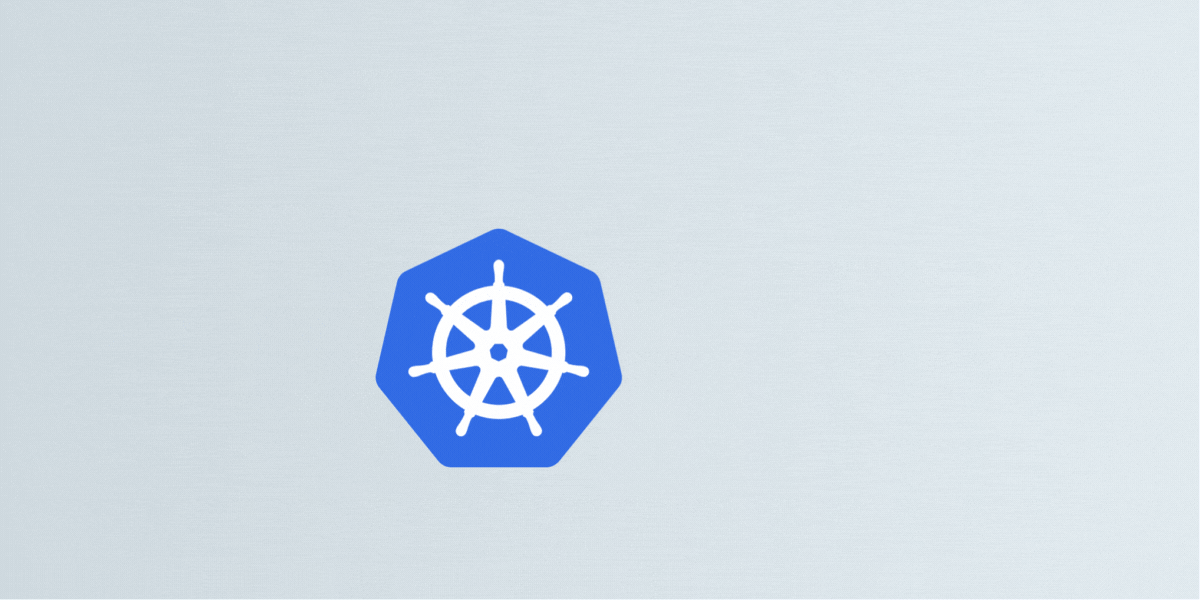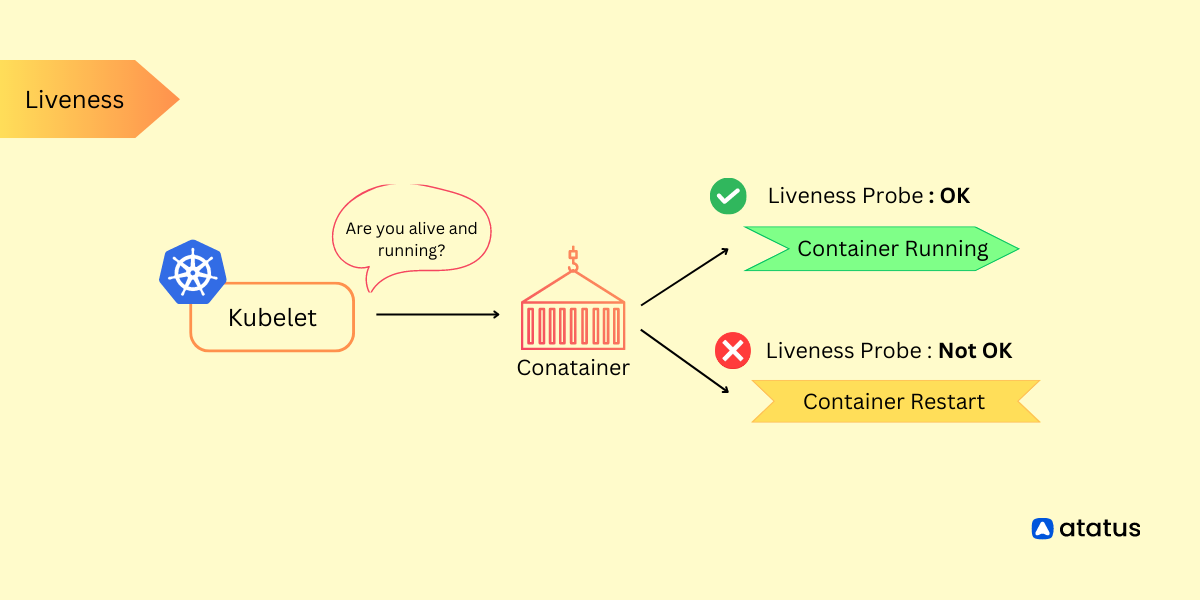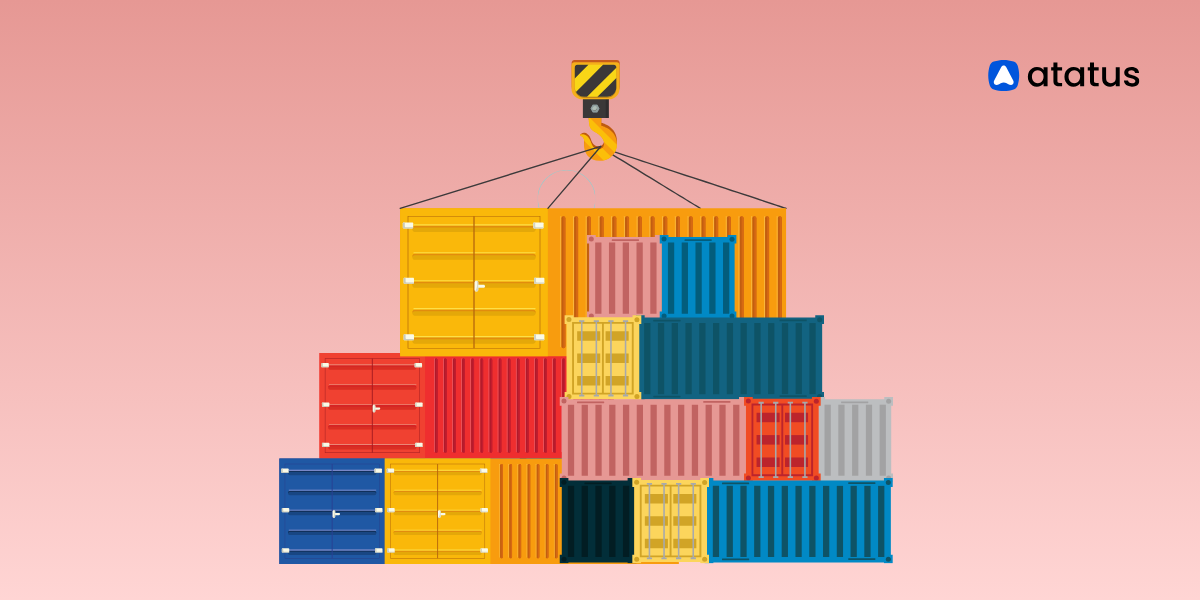Docker vs Kubernetes
Docker is a PaaS product, developed by Docker.Inc to containerize applications. It does so by combining app source code with OS libraries and dependencies required to run that code in any environment.
Kubernetes is a similar tool developed by Google, which scales up this containerized application after deployment. While one works in building the containers the other essentially helps in scaling it up, then why so much buzz around these two?
Well, it is not the entire docker vs Kubernetes but rather a specific tool within docker called docker swarm which converges with Kubernetes workflow.
Let’s look at these two in some detail,
- What is Docker?
- Benefits of docker
- Drawbacks of docker
- What is Kubernetes?
- Benefits of Kubernetes
- Drawbacks of Kubernetes
- Docker vs Kubernetes
What is Docker?
Docker can be described as a toolkit for developers to build, deploy and manage containers easily without eating away their time for coding.
A container holds the different applications and their relevant dependencies within a virtual boundary isolating them from other applications on your computer.
The software that hosts the containers is called the docker engine. Docker is extremely helpful especially now that companies are shifting to hybrid multi-cloud environments.
Benefits of docker
- Easy sharing of applications - Your developers can work on a code from anywhere before sharing it with the company using the docker extension.
- Ability to run on multiple environments - Be it your desktop, virtual machines or cloud, docker runs on all of these alike.
- Lightweight and fast - Easy to scale up or tear down applications based on service requirements. Since they don't carry the entire OS dependencies, their startup rates are fairly faster.
- Creating docker images - Create a
Dockerfileand use thedocker buildcommand to build an image, then try running the image on your computer usingdocker runcommand. - Docker swarm - A cluster of docker engines are called swarm. This allows you to create modifications in each code and check without restarting the entire application.
- Rapid scaling - The presence of docker allows more workload to be stacked into the same hardware, thus lessening our costs.
- Docker compose - A tool for running multi-container docker applications.

Drawbacks of docker
While docker is a very purposeful containerization application, there are some downsides when it comes to its whole functionality. Let's discuss them:
- GUI not available - Docker cannot be used for applications that require rich GUI.
- Difficulty in permanent data storage - recovery of data stored in a container becomes difficult if there is an unexpected shutdown of the docker. Docker
data volumesmight be a solution but it has not been well utilized. - Lacks cross-platform compatibility - an application created in docker for windows might not run well if opened in Linux. This makes it difficult to use in heterogenous environments where several servers work in communion.
- Graphical interfaces don't work - although most of the applications are run on the command line, certain applications that use graphical interfaces instead face problems when containerizing in docker.
- Speed is not comparable to bare-metal servers - unlike bare-metal servers containers are subject to speed delay due to several factors. This may include overlay networking and transfer of containers between or due to host servers.
- Problems in the ecosystem - due to a lack of coordination between several containerization platforms, all applications cannot be expected to work efficiently. For ex., Red Hat’s containers or OpenShift's applications don't work in docker.
What is Kubernetes?
Kubernetes is an open-source system for scaling and managing containerized applications. It is an orchestration tool like docker swarm which allows the working of several micro applications in the same frame.
It manages several containers together.
In simpler words, there is no need for you to manage each application within a cluster anymore, feed Kubernetes with commands for allocating resources amongst apps on the cluster once and it will follow.
Benefits of Kubernetes
- Seamless interface - It allows sharing of data across several containers easily and makes their deployment seamless.
- Supports multiple frameworks - The movement of containers between various host systems is made irrespective of the different languages the programs are in.
- Scalability - Since Kubernetes works in an integrated manner, it becomes easier to scale up or down the program, once it has been added to the repository. Adding a new application also takes lesser time.
- Increased productivity - Manages CI workloads and batch execution and replaces containers that fail if needed.
- Self-healing - Restarts containers that fail, replaces and reschedules containers when nodes die, kills containers that don't respond to your user-defined health check, and doesn't advertise them to clients until they are ready to serve.
Kubernetes deployment workflow and set-up
Three features that set apart Kubernetes are deployment, development and monitoring. The server stack in Kubernetes comprises a central master node which controls all other connected worker nodes.
When docker images are added to this server stack which is to be deployed, the Kubernetes engine connects all such servers or whole containers together. Kubelet is a node agent that enables each microservices in worker nodes to run efficiently. Each node has one kubelet in it.
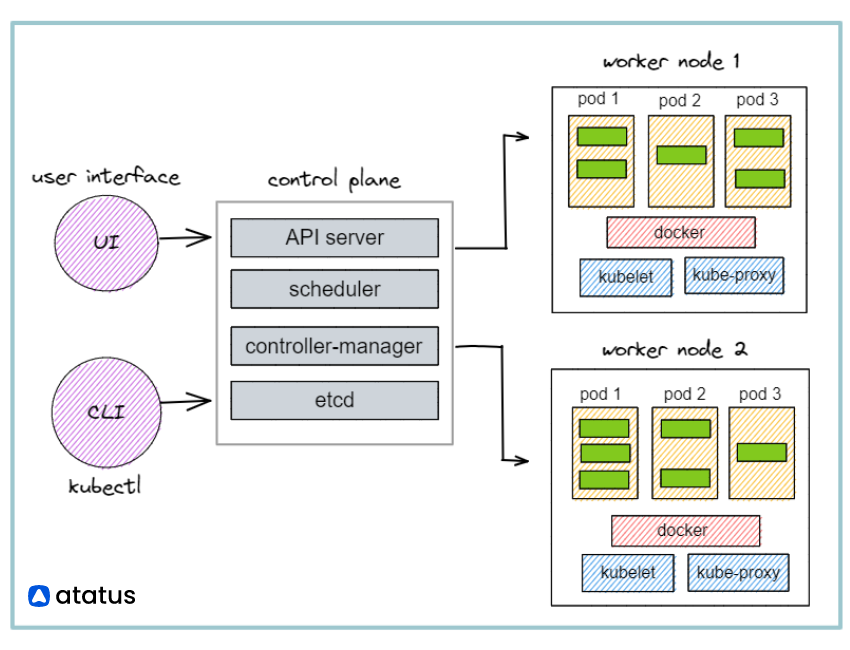
Drawbacks of Kubernetes
- Difficulty in installing - k8 is not one but many clusters and some of these clusters need to be installed separately.
- Steep learning curve - Kubernetes orchestration is a very complex topic to understand. A freshman will have to go through all the loops before he thoroughly understands k8 orchestration.
- Complex deployment set-up - K8 might be useful when handling powerful data containers but its use diminishes if you are trying out a small-scale application.
- Costly affair - setting up all of the infrastructure and regular maintenance can become costly.
- Demands expertise - only DevOps engineers with years of experience in k8 can handle configuration tasks on k8. Others might have to spend a lot of time and money on doing so.
- Not for small-scale applications - while the highlight of k8 might be the easing of the development and deployment stage, the workflow delays might cost dear for small-scale applications, apart from reducing productivity.
- Transferring existing applications might be difficult - in case you need to add a non-containerized application to the k8 machinery, the accuracy of the written software holds a high stand.
Docker vs Kubernetes
Docker and Kubernetes are not the same but docker swarm and Kubernetes have overlapping features. Both can work exclusively but best practices combine both to get the optimum maximal results.
Docker allows automated building and deployment of applications into the server. Before deploying they may be packed into containers. After it is deployed Kubernetes allows automated scheduling and management of these containers. To orchestrate these containers docker uses daemon while kubelet takes up this function in Kubernetes.
Orchestration refers to the automation of operations required to handle containers. The operations may include deployment, scaling, networking or load balancing etc.
Let's look at some of the aspects that make them different from each other:
i.) Purpose
Docker is a tool for building containers whereas Kubernetes is a platform for organizing these containers.
While docker’s main function is the automated building and deployment of applications Kubernetes comes in a later scene when it automatically schedules and manages this deployment processes of application containers.
ii.) Installation
Docker comes with a docker engine. It can be easily installed on your desktop or other VMs or even on Cloud.
While installing Kubernetes might be difficult since the infrastructure required as well as the command for installation is quite complex.
iii.) Deployment
In docker, applications are deployed in the form of services.In Kubernetes, applications are deployed in the form of several pods and services.
iv.) Graphical user interface (GUI)
Although most of the applications are run on the command lines, GUI may not be an option for those using docker.
But in Kubernetes, you have a built-in K8 dashboard that lets you know your progress and all the general activity on the platform.
v.) Functionality
Kubernetes has a high learning curve. To understand how the entire K8 interface works, there is a need for experienced developers.It is a more powerful program and can be used for services involving several containerized applications.
Relatively, docker does not have such a complex configuration and is lightweight. It is easy to use.
vi.) Scaling
Kubernetes supports auto-scaling of applications in the cluster while docker doesn't have that feature. We have to manually scale the applications in docker in case of elevated traffic or a runtime change.
vii.) Load balancing
Docker swarm supports auto-load balancing. This is not the case with Kubernetes, in which we have to manually set up load balancing.
This feature makes Kubernetes especially difficult to handle for new DevOps engineers. Manual load balancing requires a thorough understanding of the entire structure of your container deployment and demands an expert's presence.
viii.) Monitoring
Docker doesn't give any monitoring feature for your apps. you have to depend on a third party for monitoring.
While Kubernetes has a built-in monitoring function that automatically steps up in case of a running failure. For example, It automatically restarts an application if it doesn't resolve properly upon encountering a request.
ix.) Who uses them?
While Google, MetLife, and citizens bank use docker for deploying their applications, Azure, buffer, and Shopify use the Kubernetes platform.
A quick comparison,
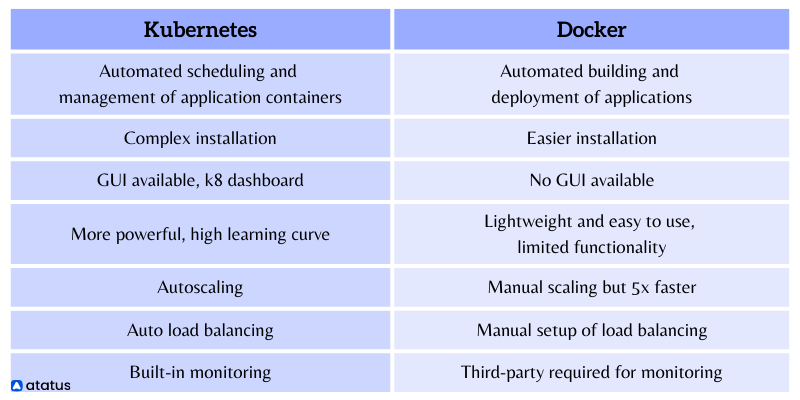
Problems with scaling up applications
One of the worst nightmares for a DevOps engineer would be the difficulty in scaling up an application owing to unprecedented traffic.
Let's say you created an application frontend in node.js and a database in java, backed with flask API coded in python. You now upload it onto a server stack and run the program. Now, if you get more than expected traffic then you’ve got to manually scale up each of these applications in a docker swarm. But in Kubernetes, if the frontend program crashes due to overload, it automatically restarts it.
In case you add an extra feature as an update and you receive an extra load than usual because of that, Kubernetes uses load balancers to ease out this extra baggage. Also, it uses the service registry and discovery capabilities to communicate with other docker containers effectively.
Which one should you choose?
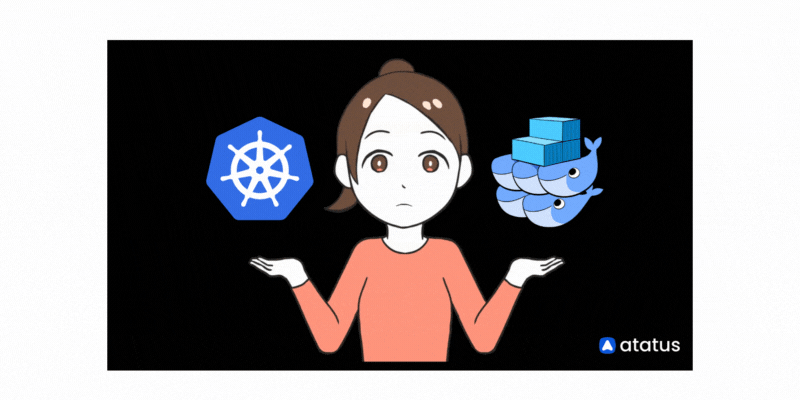
Having assessed all the major features of both these orchestration tools, we realize that both have their own advantages.
Both Kubernetes and Docker Swarm can be used in development environments but Kubernetes requires more commands to do so, whereas Docker Swarm doesn't require much configuration.
Kubernetes has features that allow it to function well in larger clusters because of its centralized nature which also makes it more scalable than other tools such as Mesos or Cloud Foundry when it comes to running clusters in production environments.
This means that Kubernetes is a better solution if you want a system that will scale well over time when under heavy load.
If you are building a platform that includes many apps, obviously expecting much bigger traffic on the site then you should go for Kubernetes, its engine is comparably very powerful than a docker engine.
But if you are building a simple, small app, then don't get into the complexities of Kubernetes and work with the docker swarm instead.
Both of these tools have high utility, so it is better to work carefully by choosing which to use and when. Either way you choose, docker is a primary requirement for making containers. So go for Kubernetes along with it only if necessary.
Both systems offer high availability and scalability; however, Kubernetes also provides resiliency against node failures, unlike Docker swarm which does not offer this service.
They are not competing technologies but complement each other if dealt with mindfully.
Infrastructure Monitoring with Atatus
Track the availability of the servers, hosts, virtual machines and containers with the help of Atatus Infrastructure Monitoring. It allows you to monitor, quickly pinpoint and fix the issues of your entire infrastructure.
In order to ensure that your infrastructure is running smoothly and efficiently, it is important to monitor it regularly. By doing so, you can identify and resolve issues before they cause downtime or impact your business.
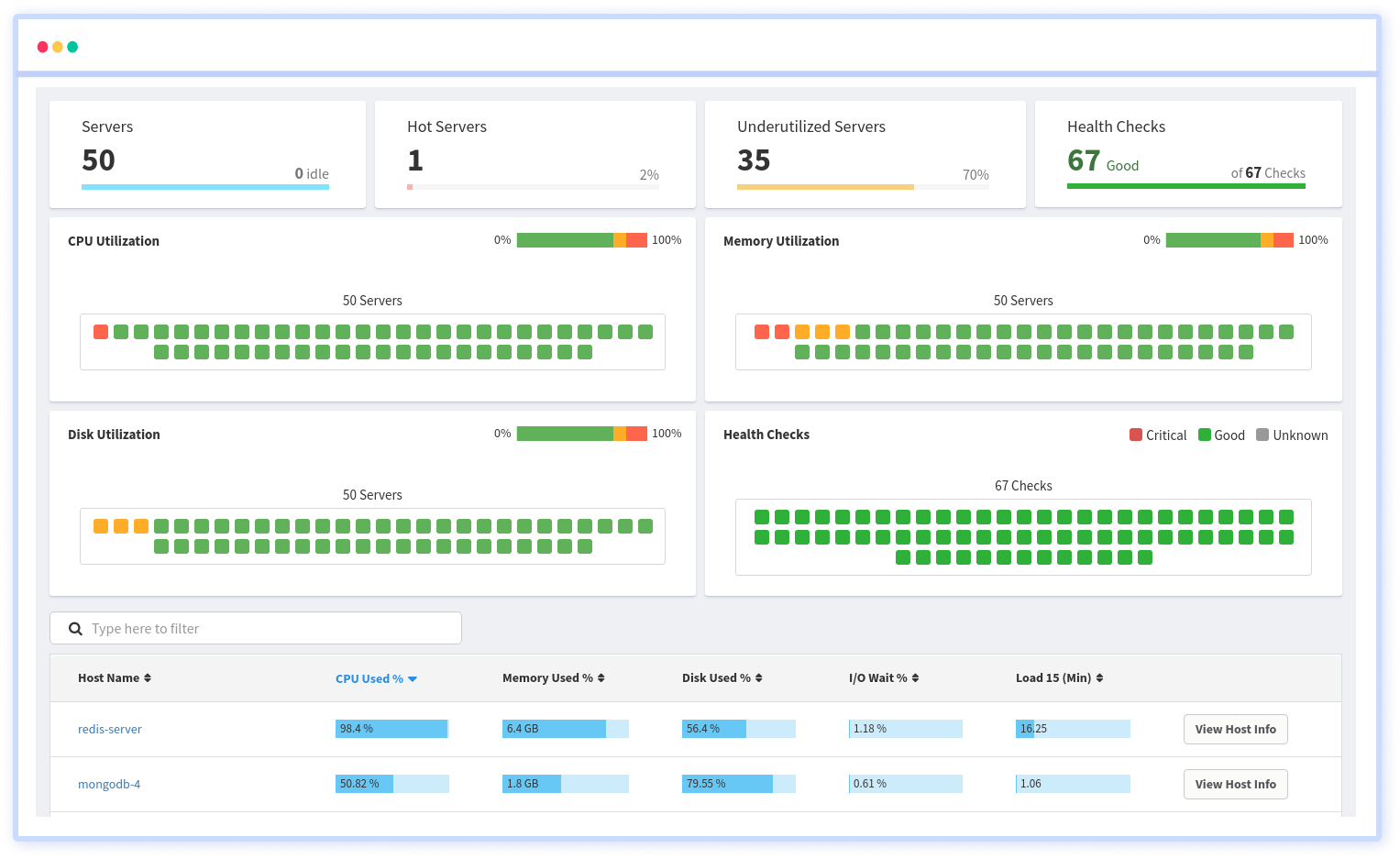
It is possible to determine the host, container, or other backend component that failed or experienced latency during an incident by using an infrastructure monitoring tool. In the event of an outage, engineers can identify which hosts or containers caused the problem. As a result, support tickets can be resolved more quickly and problems can be addressed more efficiently.
Start your free trial with Atatus. No credit card required.
#1 Solution for Logs, Traces & Metrics
APM
Kubernetes
Logs
Synthetics
RUM
Serverless
Security
More

